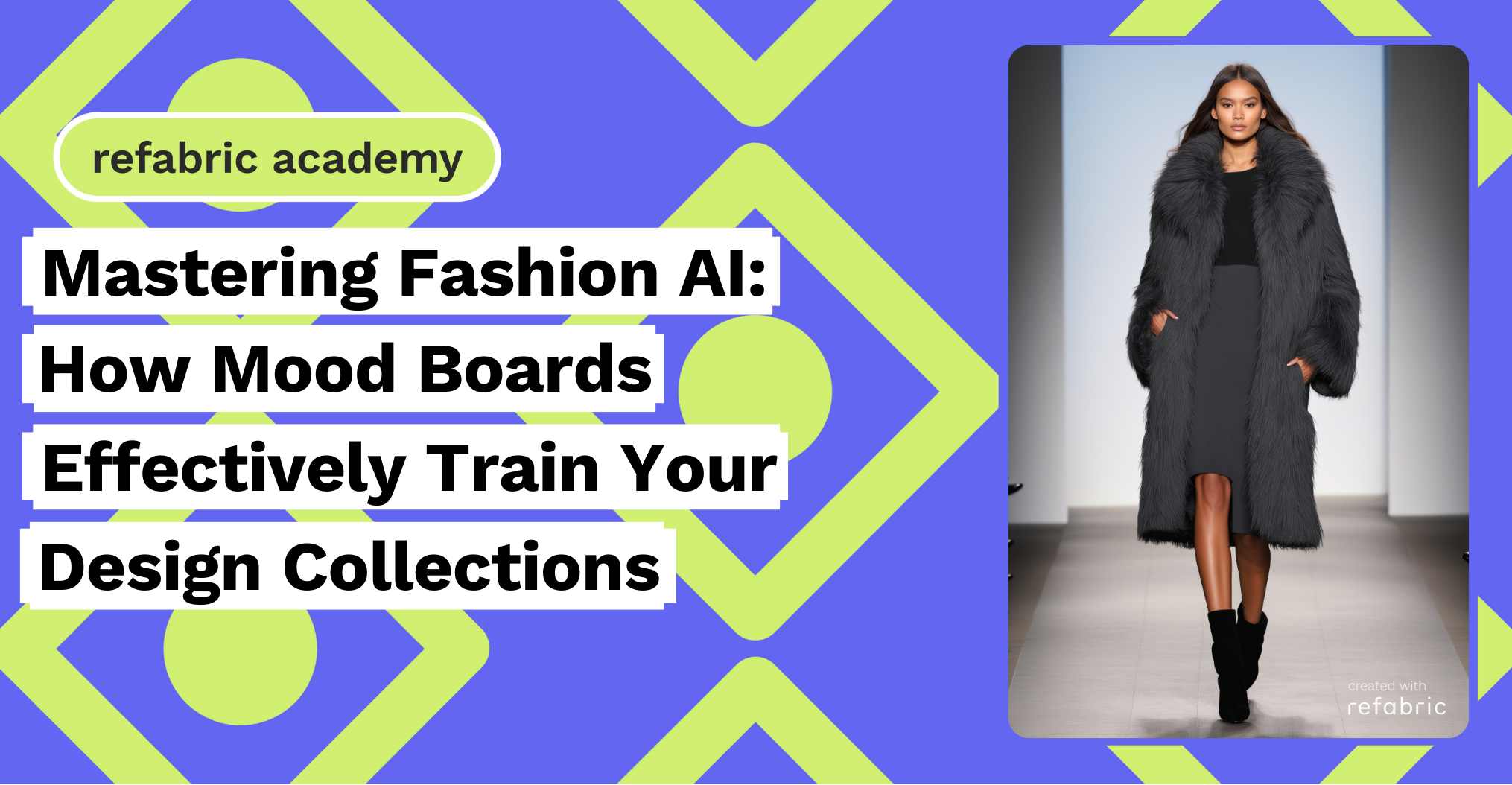Fashion AI is reshaping how designers visualize and create, drawing inspiration from the longstanding trend of collages, Pinterest boards, and mood boards that have fueled artistic exploration across social media. Now, this trend is evolving further, creating “starter pack” memes for different cultural references and mood boards to capture specific moments and feelings. Fashion AI design could benefit from this visualization process and with their power combined, designers can achieve to design cutting-edge collections that are concise and unique at the same time.
By tapping into the powerful visualization and organization capabilities of mood boards, designers can train AI systems to generate cutting-edge fashion collections that are both innovative and highly curated. This intersection of art and technology opens new possibilities for fashion, offering a way to bridge aesthetics, emotions, and futuristic designs.
Aesthetic Inspiration Through Collages and Mood Boards
Mood boards have become a dominant force in digital and social media spaces, from “starter pack” memes to Pinterest’s highly curated boards. These collages of images, colors, and textures encapsulate specific moments, emotions, and aesthetics. As mood boards grew more popular, they became an essential tool for designers across industries, helping visualize design concepts, guide creative direction, and even forecast trends. In fashion, mood boards condense an entire aesthetic or brand concept into a single, cohesive visual that communicates a narrative without words.
One of the most inspiring visual social media apps Pinterest, introduced its new sister app Shuffles in 2022, which changed the whole Pinterest game, consisting of “Pinterest boards” that allow their users a fun experience where they can categorize aesthetics, clothing and other design ideas. It allows to create a single canvas where all the similar ideas can be brought together, creating visually pleasing collections that explain an aesthetic. Using Pinterest has always been fun, but with this new feature, the explanation of an aesthetic lies under a pile of images, giving the feeling of what it tries to tell you. It could be, sweet, mad, caring, messy or angry.
By integrating these mood board techniques into fashion AI design, fashion designers can provide AI systems with visual prompts and inputs that capture a particular style, era, or emotional theme. For example, using mood boards filled with bold colors, geometric shapes, and futuristic elements could guide an fashion AI tool to generate avant-garde designs that push the boundaries of traditional fashion.
Storytelling is overrated, let’s go back to basics.
Storytelling is overrated, within the new short attention spans, brands are now heading towards aesthetics, sensory experiences and feelings. While a story remains important with its power to capture audiences, a glimpse should be enough to tell what is to be told. Using mood boards to train fashion AI design is a good way to explain what is desired in seconds, shortcutting the vision that the designer wants to see in the clothing experience. Fashion AI design thrives in this environment, where aesthetics and visual identity take precedence over lengthy narratives. In this new fashion landscape, mood boards can efficiently convey a brand’s identity or collection’s direction in seconds.
Using mood boards to train fashion AI systems allows for instant visual feedback. Designers can upload mood boards that reflect their desired outcomes—whether it’s a grunge aesthetic, minimalist style, or something more experimental. This process acts as a visual shortcut, enabling the AI to align its outputs with the creative vision in a more intuitive way.
Cutting-Edge Collections Born from Fashion AI Training
The future of AI in fashion design will be deeply intertwined with visual tools like mood boards. By using mood boards as a key input for training AI clothing design systems, designers can streamline the creative process and produce collections that are both cutting-edge and true to their artistic vision. Whether it’s exploring the limits of futuristic fashion or revisiting nostalgic aesthetics, fashion AI design has the potential to revolutionize how we approach fashion, making it more responsive to both current trends and emerging cultural movements.
In conclusion, collages and mood boards are no longer just tools for personal inspiration—they are integral to the future of fashion AI design. With the ability to condense complex emotions and styles into a single image, mood boards provide fashion AI systems with the context needed to generate innovative and unique designs. As technology continues to advance, the collaboration between human creativity and AI will push fashion into exciting new territories, resulting in collections that are as cutting-edge as they are cohesive.
